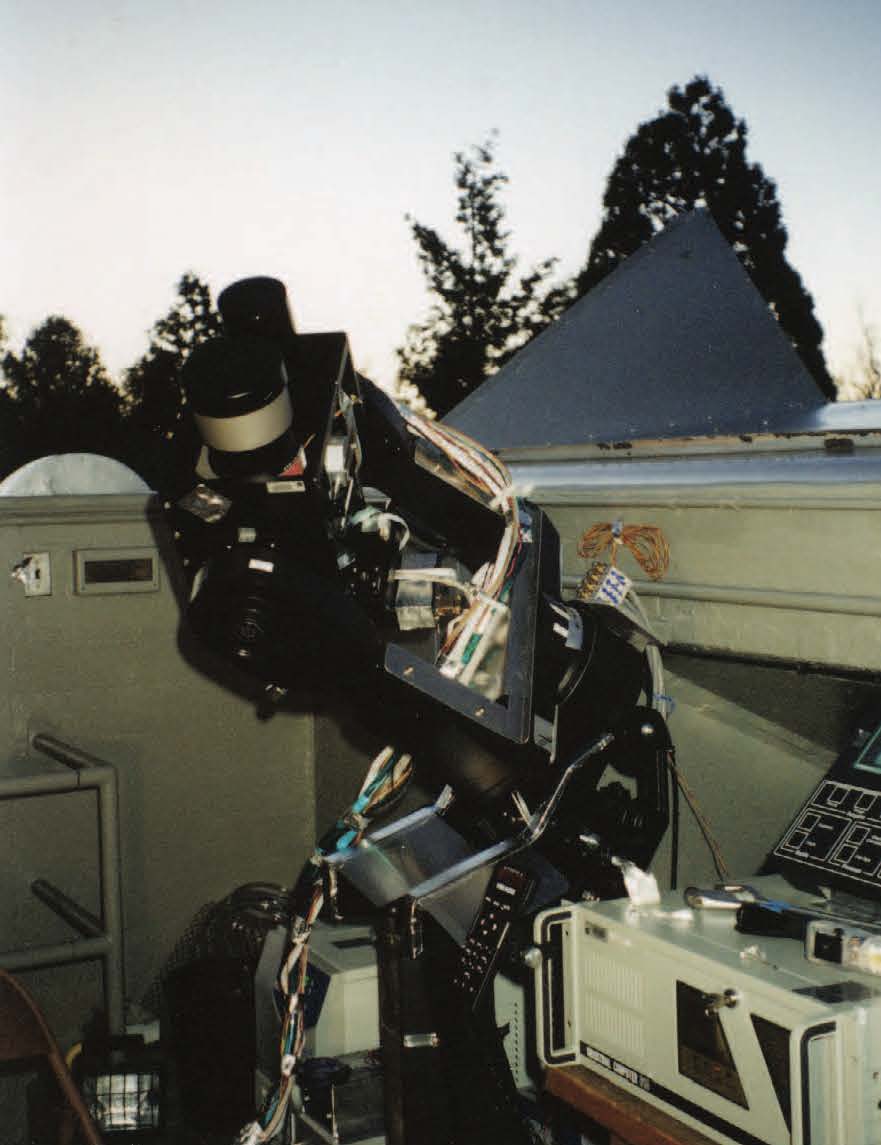Sleuth: The Palomar Planet Finder
Introduction
Sleuth (original webpage) was a dedicated planet-search telescope which was set up by David Charbonneau. Dr. Charbonneau and I used this automated telescope to search for evidence of transiting extrasolar planets. Sleuth monitored roughly 10,000 stars (brighter than V=12) in a 6 degree square field-of-view for transiting extrasolar gas-giant planets. This planet finder was the third instrument in the TrES network that also contained STARE (located in Tenerife) and PSST (located in northern Arizona). Candidates identified by Sleuth were observed by our automated follow-up telescope Sherlock to rule out most forms of false positives resulting from eclipsing binaries. Sleuth was situated in the 20-inch enclosure at Palomar Observatory. This observatory in northern San Diego County, California is owned and operated by the California Institute of Technology.
Sleuth had an f/2.8 lens with a 10-cm aperture that imaged a 6 degree squared field of view onto a 2048x2048 back-illuminated CCD camera. Sleuth conducted nightly observations with an SDSS r filter, but also gathered color images in g, i and z during new moon. Sleuth automatically adjusted the focus for changes in temperature and filter. A separate f/6.3 lens fed the guide camera. The automated observations, including operation of the clamshell enclosure, were controlled by a workstation running Linux. In the event of threatening weather, the on-site night assistant for the 200” telescope closed the system remotely, and an observatory weather station provided additional protection. At dawn, the night’s data were automatically compressed and sent by ftp to our workstation at Caltech.
Having suffered repeated electronic failures after a unexpected rainfall, we decided to retire Sleuth gracefully. We are grateful to the staff at Palomar Observatory who facilitated the operation of this little telescope that helped discover three transiting exoplanets.
Sleuth News
- Stephen Colbert adopts TrES-2!
- Goodbye to Sleuth.
- We found the largest known transiting planet at the time, TrES-4.
- We found a transiting planet, TrES-3, with 1.9 Jupiter masses and an orbital period of only 1.3 days.
- TrES-2, the first known transiting planet in the Kepler field and the most massive nearby transiting planet, discovered using small-aperture telescopes.
- Sleuth mentioned in the Astronomy Ireland Magazine: Minnow Telescope Finds Massive Planet.
- Sleuth plays prominent role in the discovery of TrES-2. TrES-2 is the first known transiting planet in the Kepler field and was at the time the most massive nearby transiting planet.
- Sleuth and the High Performance Wireless Research and Education Network.
- Sleuth, the Little Telescope That Could.
- Sleuth mentioned on NASA’s PlanetQuest page.
- Aerial Photos of Palomar Observatory - Where’s Sleuth?!
- A brief mention of Sleuth and Sherlock in the San Diego Union-Tribune: Palomar Observed.
- Sleuth Planet Search Telescope featured in December 2004 National Geographic.


Leave a comment